This is the holiest day of all Buddhist days marking the birth, enlightenment and nirvana of the Lord Buddha. It is celebrated on many different dates, and in many different ways all over the world.
In many east Asian countries Buddha’s Birth is celebrated on the 8th day of the 4th month in the Chinese lunar calendar (in Japan since 1873 on April 8 of the Gregorian calendar), and the day is an official holiday in Hong Kong, Macau, and South Korea. The date falls from the end of April to the end of May in the Gregorian calendar.
In Nepal:
In Nepal, Buddha’s birthday is celebrated on the full moon day of May. In 2017, the holiday occurs on May 10. The festival is known by various names, Buddha Jayanti, Buddha Purnima, Vaishakh Purnima and Vesak. Purnima means full moon day in Sanskrit. Among the Newars of Nepal, the festival is known as Swanya Punhi, the full moon day of flowers. The day marks not just the birth of Shakyamuni Gautam Buddha but also the day of his Enlightenment and Mahaparinirvana. But as a gentle effect of the West, the event of the birth is given paramount importance.
The event is celebrated by gentle and serene fervor, keeping in mind the very nature of Buddhism. People, especially women, go to common Viharas to observe a rather longer-than-usual, full-length Buddhist sutra, as something like a service. The usual dress is pure white. Kheer, a sweet rice porridge is commonly served to recall the story of Sujata, a maiden who, in Gautama Buddha’s life, offered the Buddha a bowl of milk porridge after he had given up the path of asceticism following six years of extreme austerity. This event was one major link in his enlightenment.
It is said that the Buddha originally followed the way of asceticism to attain enlightenment sooner, as was thought by many at that time. He sat for a prolonged time with inadequate food and water, which caused his body to shrivel so as to be indistinguishable from the bark of the tree that he was sitting under. Seeing the weak Siddhartha Gautama, a girl named Sujata placed a bowl of milk in front of him as an offering. Realising that without food one can do nothing, the Buddha refrained from harming his own body.
In India:
The birth of Buddha or Tathagata is celebrated in India, especially in Sikkim, Ladakh, Arunachal Pradesh, Bodh Gaya, various parts of North Bengal such as Kalimpong, Darjeeling, and Kurseong, and Maharashtra (where 6% of total population are Buddhists) and other parts of India as per Indian calendar. The day is celebrated much the same way as in Nepal.
In Thailand:
Visakha Puja, the year’s greatest religious holiday, which commemorates the Buddha’s birth, enlightenment and death, comes during seeding and plowing. This is the holiest day of all Buddhist days marking the birth, enlightenment and nirvana of the Lord Buddha.
Buddhists will make merits and attend sermons at the temples (Wat). In the evening, Buddhist monks lead the laity in a magnificent candle-light triple circumambulation of Buddhist chapels throughout the country.Village elders attend temple celebrations and sermons during the day.
Those who have been working all day in the fields return at dusk to join the lovely candle or torchlit procession that circumambulates the temple chapel three times. Enacted in every village, town and city Wat (temple), each person carries flowers, three glowing incense sticks and a lighted candle in silent homage to the Buddha, his teaching and his disciples.
In Japan:
In Japan, Buddha’s birth is also celebrated according to the Buddhist calendar but is not a national holiday. On this day, all temples hold Kanbutsu-e or Hana-matsuri, meaning ‘Flower Festival’. The first event was held at Asuka-dera in 606.
Japanese people pour ama-cha (a beverage prepared from a variety of hydrangea) on small Buddha statues decorated with flowers, as if bathing a newborn baby.
In Korea:
Lotus Lantern Festival celebrating Buddha’s Birthday, is celebrated in South Korea according to the Lunisolar calendar. This day is called Seokga tansinil, meaning “Buddha’s birthday” or Bucheonim osin nal meaning “the day when the Buddha came.”.
Lotus lanterns cover the entire temple throughout the month which are often flooded down the street. On the day of Buddha’s birth, many temples provide free meals and tea to all visitors. The breakfast and lunch provided are often sanchae bibimbap.
In Sri Lanka:
This is one of the major festivals in Sri Lanka. It is celebrated on the first full moon day of the month of May. People engage in religious observances and decorate houses and streets with candles and specially made paper lanterns. some stores give out free meals for people.
In specific places, there are buildings made out of light bulbs but from a distance it represents pictures from the Buddha’s life. They are called vesak thorun (Pandals). People sing songs called “bhakthi geetha”.
United States:
Among the many practicing Buddhists in the United States, Buddha’s Birthday (Hana-Matsuri) is widely celebrated on April 8 of the standard Gregorian calendar.
In 1968 on April 8 in the California Bay Area, the first circumambulation of Mt. Tamalpais to celebrate Buddha’s Birthday was conducted. The director of the Esalen at Stanford program designed a leaflet and had it distributed to all universities in the Bay Area. Some brought sleeping bags and slept overnight in Muir Woods to enable an early start up the Dipsea Trail.
For the several hundred people involved, it was an unforgettable day clear, sunny, calm, and somewhat warm. Gary Snyder, Allen Ginsberg, and Philip Whalen were there. Taught by Gary and Allen, we chanted a different mantra at every station of the clockwise circumambulation. We all stopped for lunch on a sunny hillside. Allen brought miso for lunch, and he passed it around for others to enjoy.
Starting in 1969 on April 8 (and into the 1970s) at Tassajara Zen Mountain Center, Hana-Matsuri was celebrated each spring. Dressed in formal black robes, the roughly 70 monks and students formed a formal procession to the Horse Pasture with the leader periodically ringing a small, clear bell.
A temporary stone altar was built under a huge oak tree in a gorgeous field of green grass and abundant wildflowers; a small statue of a baby Buddha was placed upon it in a metal basin. Then each person would in turn approach the altar, ladle one thin-lipped bamboo dipperful of sweet green tea over the statue, bow, and walk to one side. How haunting and mysterious – the juxtaposition of formality, ritual and wild Nature.
Other countries:
Some places have a public holiday one week later, on the fifteenth day of the fourth month in the Chinese Lunar Calendar, to coincide with the full moon. The names for this festival vary with each country, for instance Visakha Puja in Thailand or Lễ Phật đản in Vietnam. In some countries it is a public holiday, in others it is not.
Krazelna: Day of Hekate
Krazelna: Day of Hekate
Krazelna: Day of Hekate
Rachel V Perry: Emancipation Day
Rachel: The Nemesia
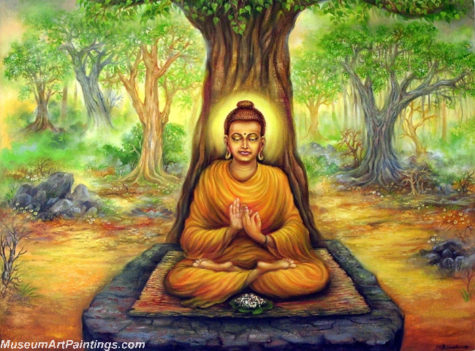
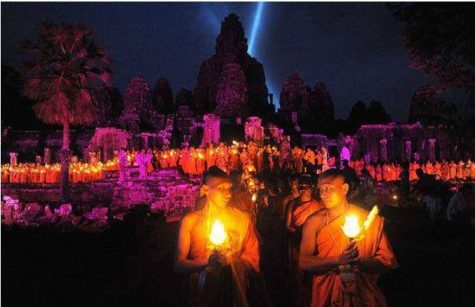
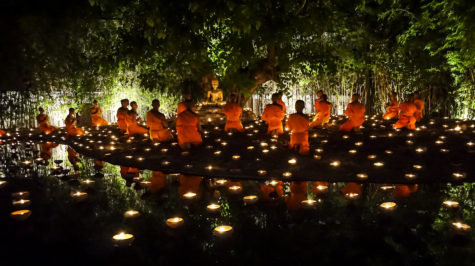
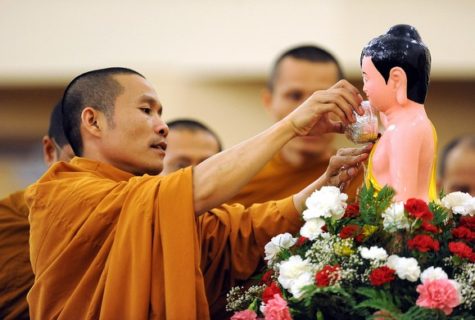
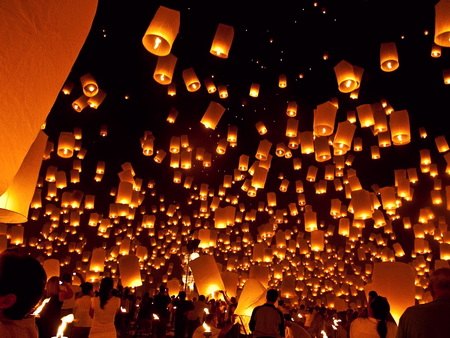
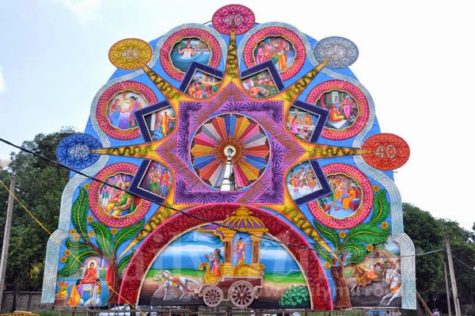
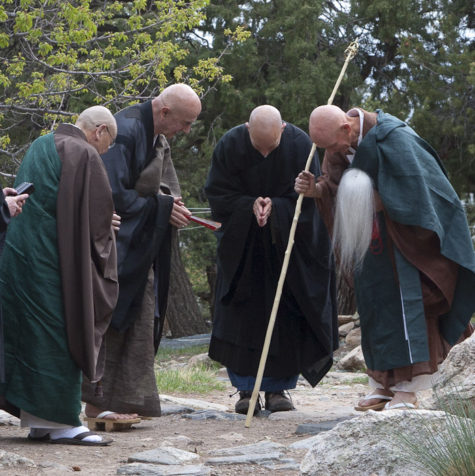



Leave a Reply